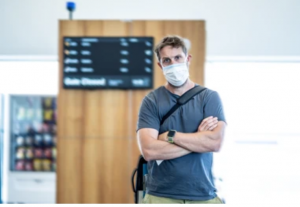The world is re-opening- what about Australia?🇦🇺
Australia is sticking to plans to re-open mid-2022 , despite the world reopening?!🤯
In March 2020, Australia closed its borders to non-nationals and non-residents and has since been allowing only limited international arrivals, mainly citizens returning from abroad.
Prime Minister Scott Morrison has said all the way through we will be guided by the medical and economic advice. This comes as Melbourne will take its first small steps out of lockdown this coming Friday, again.
The Morrison government has long been heavily criticised and exposed for Australia’s failings when it comes it administering the slow rollout COVID-19 vaccine.
It’s ridiculous this is still happening with Australia’s as the world reopens, especially with Australia’s swift contact tracing and public health compliance has ranked its control measures among the world’s most effective with total infections total about 29,700 and very low deaths at just 910.
This is really hard to swallow this government knows what it is doing.
Our World In Data revealed just how far behind the nation is with its rollout as countries like the US, UK, Canada and Spain continue to forge ahead, which makes it even more difficult as our Instagram and Facebook is lit with pics of holidays and vacations of back to normal summer holidays right now.
Just 3.1 million doses of the COVID-19 vaccine have been administered in Australia so far, well behind the 274 million doses in the US, 183 million in India and 57 million in the UK.
So when? How to reopen Australia?
Frustrated by the lack of strategy from the federal government about how and when border restrictions could be eased, the president of the Australian Medical Association, Dr Omar Khorshid, has said the government could open earlier if it made vaccines mandatory for anyone wanting to travel.
He said its possible if they begin work on a strategy now based on independent medical advice that prioritised the safety of the community over any other factor. A strategy taking into account factors such as the local rate of vaccinations and the capacity of the Australian health system to keep up with ongoing growth in demand for services, particularly in our public hospitals.
It would obviously include vaccinations for people wanting to travel overseas and quarantine at home rather than the current hotel quarantine and a traffic light system to define high-risk countries should be part of a plan to reopen Australia to the rest of the world while ensuring that there is sufficient surge capacity available to deal with future community outbreaks.

Dr Khorshid said the key component of the strategy would be mandatory Covid-19 vaccinations for outbound and inbound travellers, with only limited exemptions for defined medical reasons. Dedicated quarantine facilities for those travelling to and from countries deemed as high risk and rapid screening tests at Australian airports and ports.
The adoption of a traffic light or system with set criteria for the easing of borders with low risk countries, containment strategies and data transparency.
This would include risk mitigation measures should be attached to the traffic light system, including border closures with very high-risk countries and regions, requirements for onshore and offshore testing, and mandatory time in home or designated quarantine.
Currently, vaccination levels in Australia are too low to consider opening the borders, but this could not continue indefinitely initially. He also proposed targeting travel with low-risk destinations and proposing a public campaign and discussion around reopening to reduce people’s fear and further public education and promotion of vaccination.


What does this mean? Miss out on travel, but miss out on COVID
Is it likely that the Government and Prime Minister Scott Morrison and take this common sense advice ? Probably not so bad news for those us us who like to travel or who work in the travel and tourism industry Australians can expect to miss out on travel bubbles, suffer sporadic lockdowns and face continuous economic hits, as our vaccine rollout falls behind the rest of the world.
We’re currently sitting in 90th place in the global vaccination race – a ranking that’s only going to slip further. So for the anti-vaxxer’s in Australia I would love to hear what they suggest to reopen the country and what strategy they suggest as vaccination is the only one that has any success with Israel leads the pack in terms of doses per population, with the United Arab Emirates coming second, followed by Chile, the UK, Bahrain and the US.
In Australia our current position means we’re staying on home soil for a time further, until we have an alternative strategy, which is meant to be the vaccine, it also means we can expect more lockdowns without a state set for reopening.😓


































